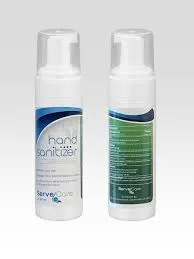Effective Use of Poly Aluminium Chloride in Water Treatment
The Use of Poly Aluminium Chloride in Water Treatment
Poly Aluminium Chloride (PAC) is a widely utilized coagulant in the water treatment industry, renowned for its effectiveness in purifying drinking water and treating wastewater
. Its advantages over traditional coagulants, such as alum, have prompted a growing number of water treatment facilities to adopt PAC as a preferred agent.PAC is a type of inorganic polymer that consists of aluminum ions and chloride ions. Its unique structure allows it to form large flocs, which are aggregates of particles that bind together to facilitate sedimentation. This is crucial in the treatment process, as the larger flocs settle more quickly, thereby enhancing the efficiency of the separation process.
One of the most significant benefits of using PAC in water treatment is its superior performance over conventional coagulants. PAC works effectively over a wide range of pH levels, which makes it versatile for different types of water sources. Whether dealing with surface water, groundwater, or industrial effluents, PAC can achieve optimal coagulation without the need for extensive pH adjustments.
use of poly aluminium chloride in water treatment

Moreover, the lower dosage required when using PAC compared to alum translates into cost savings for water treatment facilities. This reduction in dosage not only decreases operational costs but also minimizes the generation of sludge, making the disposal process simpler and more environmentally friendly. The lower volume of sludge produced by PAC also enhances the overall sustainability of the water treatment process.
In terms of effectiveness, PAC has demonstrated a high capacity for removing turbidity, organic matter, and even some heavy metals from water. This is especially important in areas where water quality is a significant concern due to pollution or other environmental factors. By improving the overall quality of drinking water, PAC contributes to public health and safety.
Additionally, PAC’s inherent ability to improve the aesthetic qualities of water—such as taste and odor—makes it a desirable choice for many municipalities. The clearer and cleaner water produced through PAC treatment not only meets regulatory standards but also enhances public confidence in the safety and quality of their drinking water.
In conclusion, the use of Poly Aluminium Chloride in water treatment presents numerous advantages, including effective coagulation, compatibility with varying water chemistries, reduced chemical usage, and improved environmental outcomes. As water quality challenges persist globally, PAC stands out as a viable solution that meets the needs of modern water treatment practices while ensuring the safety and health of communities.
-
Water Treatment with Flocculant Water TreatmentNewsJun.12,2025
-
Polymaleic AnhydrideNewsJun.12,2025
-
Polyaspartic AcidNewsJun.12,2025
-
Enhance Industrial Processes with IsothiazolinonesNewsJun.12,2025
-
Enhance Industrial Processes with PBTCA SolutionsNewsJun.12,2025
-
Dodecyldimethylbenzylammonium Chloride SolutionsNewsJun.12,2025





